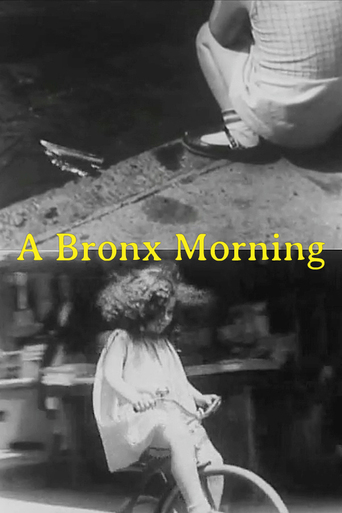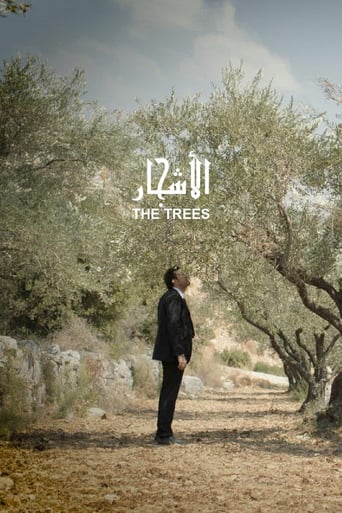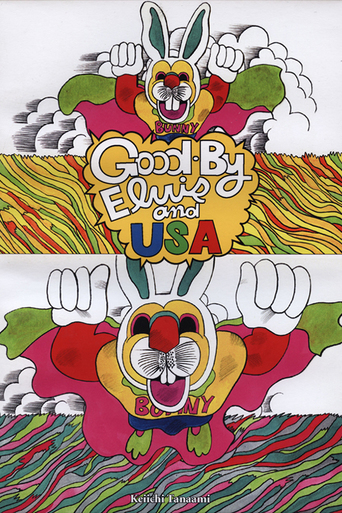

A Bronx Morning (1931)
Arrival in the Bronx is shown with a view from an elevated train as it enters the city. Then follows a montage of sights from the Bronx. Many typical neighborhood activities are shown, along with scenes from many local businesses.
Watch Trailer
Cast


Similar titles
Reviews
Lack of good storyline.
A lot of perfectly good film show their cards early, establish a unique premise and let the audience explore a topic at a leisurely pace, without much in terms of surprise. this film is not one of those films.
This movie feels like it was made purely to piss off people who want good shows
Great story, amazing characters, superb action, enthralling cinematography. Yes, this is something I am glad I spent money on.
Arrival in the Bronx is shown with a view from an elevated train as it enters the city. Then follows a montage of sights from the Bronx. Many typical neighborhood activities are shown, along with scenes from many local businesses.It's very striking that this was filmed during the Depression, with all the signs in store windows encouraging people to shop now that prices are lower, or they are going out of business. There was at least one "fire sale" (a term I had no idea was in common use). This makes the film something of an important historical document.But also, with so many clever angles and a focus on things that the average person may not even think to capture, the film is ahead of its time. A documentary, but also a work of art. I'm sure someone has carefully studied this film, trying to identify the businesses and maybe even the people.
"A Bronx Morning" is pretty much exactly what the title says: 11 minutes of scenes from the Bronx. It is a silent movie, don't be fooled by soundtracks added later, and in black-and-white. It was directed by Jay Leyda 85 years ago and I see he was still extremely young when he made this film and was not too prolific afterward anymore. I read that he also succeeded as a poet and as a photographer, so maybe this was his preferred career choice. As for his work here, I believe this will only appeal to people who either live in the Bronx themselves or just have a very special connection to the city of New York. Everybody else can certainly skip this little movie. Not bad by any means, but not a good watch for anybody either who doesn't really care about the subject of this documentary. I do not recommend watching it, even if the National Film Registry apparently thinks different.
Jay Leyda covers the borough of the Bronx in this historically and visually interesting eleven minute documentary shot before lunch. As historical artifact it captures time, place and character of a section of New York City that was only known for The House That Ruth Built. Leyda's effective unorthodox style offers more than a straight forward portrait of the Bronx as he plays with abstraction and fractured image. Aided immensely by the shadow stretching sun rising over the East River, he creates expressionistic canvases in a documentary setting of city street and storefront. Stylistically, Bronx evokes a Russian influence of Alexander Rodchenko photography and filmmaker Sergei Eisenstein montage, complete but a little over done with homage baby carriages. The editing is a little sloppy at times and there is some image repetiveness but Leyda's imaginative eye keeps things interesting most of the way.
The technique and material in this short feature are both interesting, and they fit together much better than might be expected. Jay Leyda's avant-garde technique works surprisingly well in conveying the sights and atmosphere of the Bronx of his era. For the rather arty methods to blend together with the down-to-earth nature of the Bronx is rather an achievement.Leyda's use of the camera combines rapid montage of loosely-related images, similar to that in the features of Vertov and other Soviet directors of the era, with the basic 'city symphony' approach exemplified by Ruttmann's excellent Berlin feature. The beginning and the end also feature some of Leyda's own abstract ideas. The actual material, by contrast, shows everyday scenes from a lot of different Bronx businesses and neighborhood activities.It's worth seeing a couple of times, since the technique is rather distinctive, and since it also does well in preserving an interesting neighborhood as it was in the 1930s.




